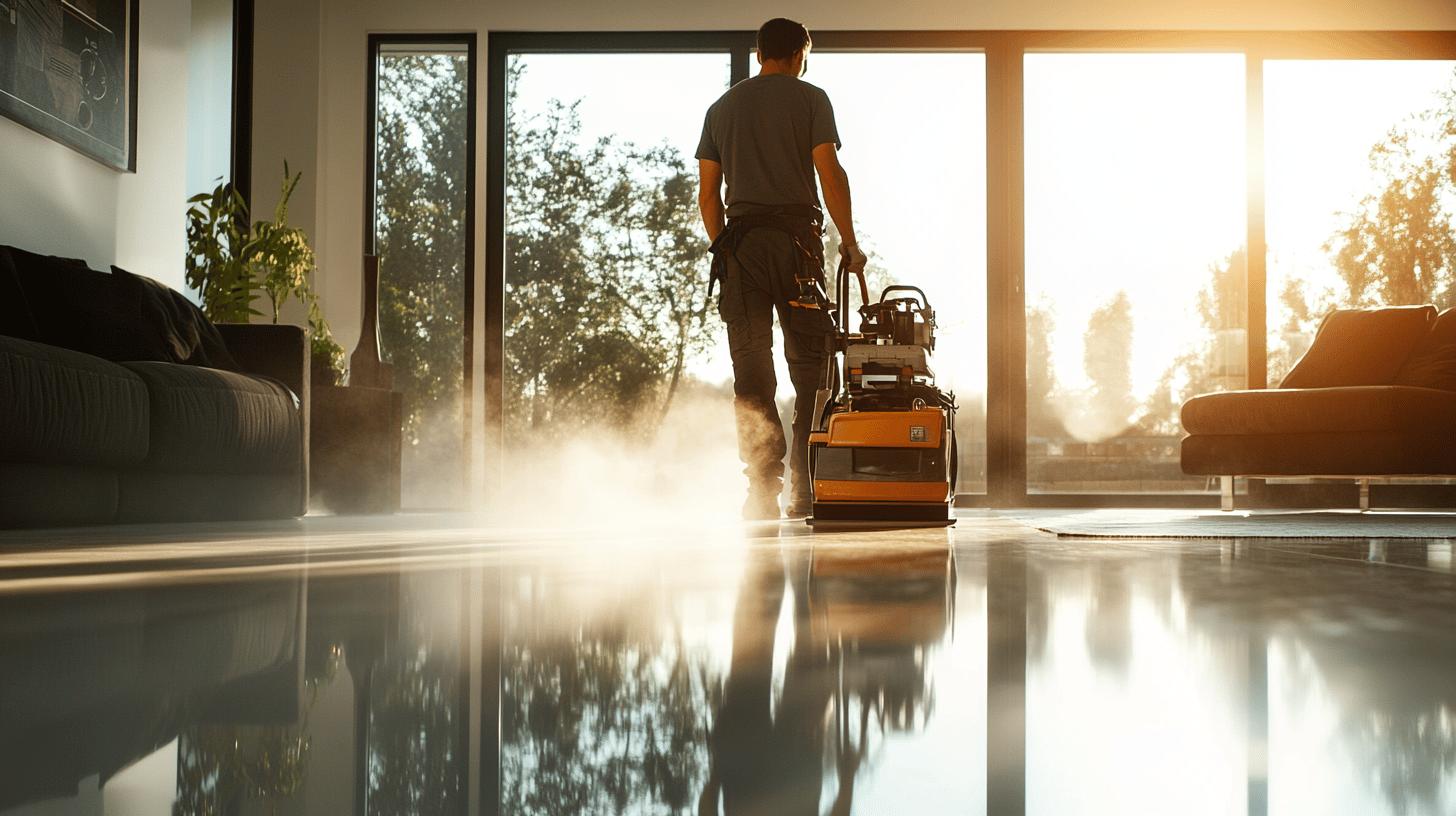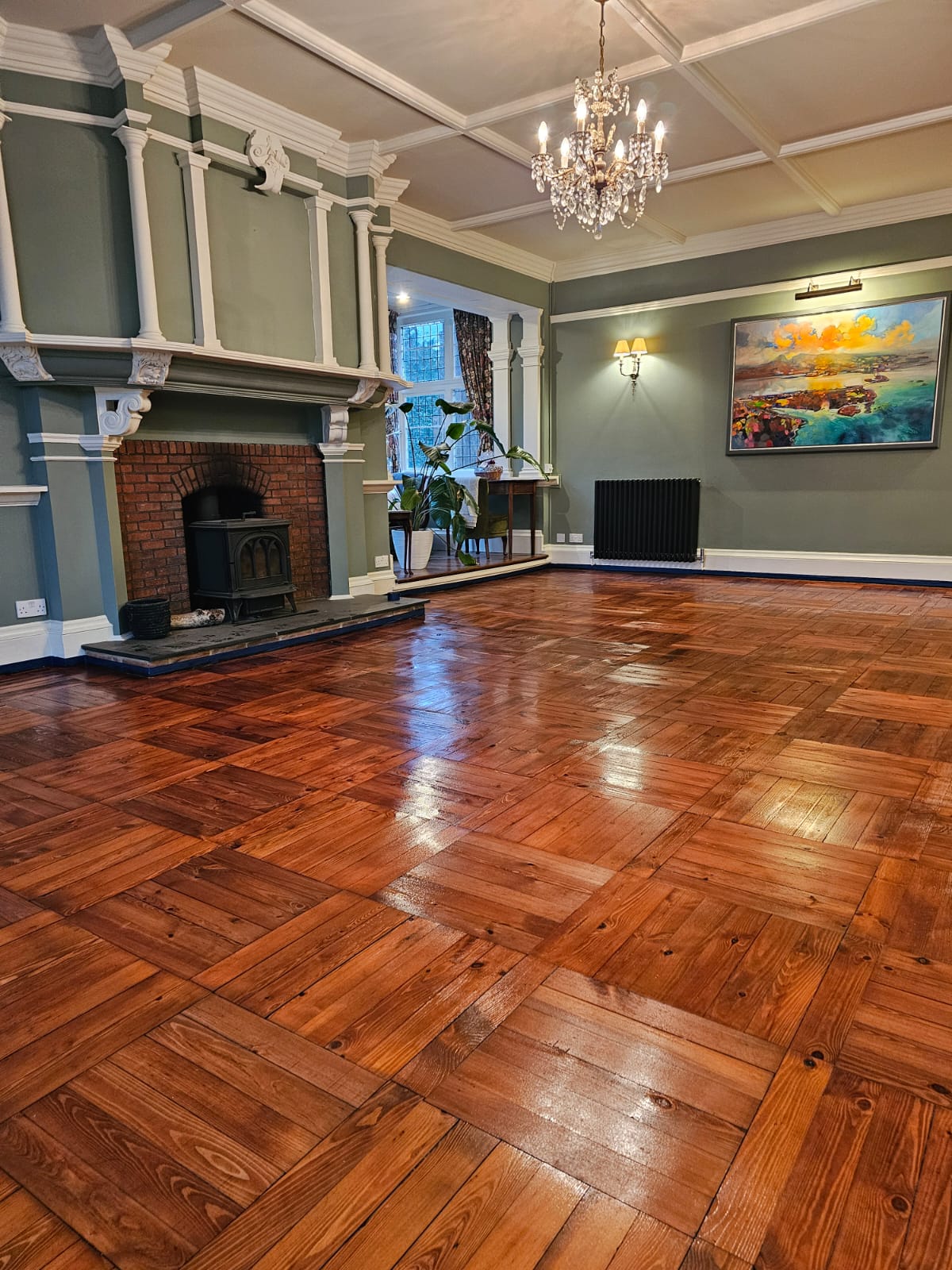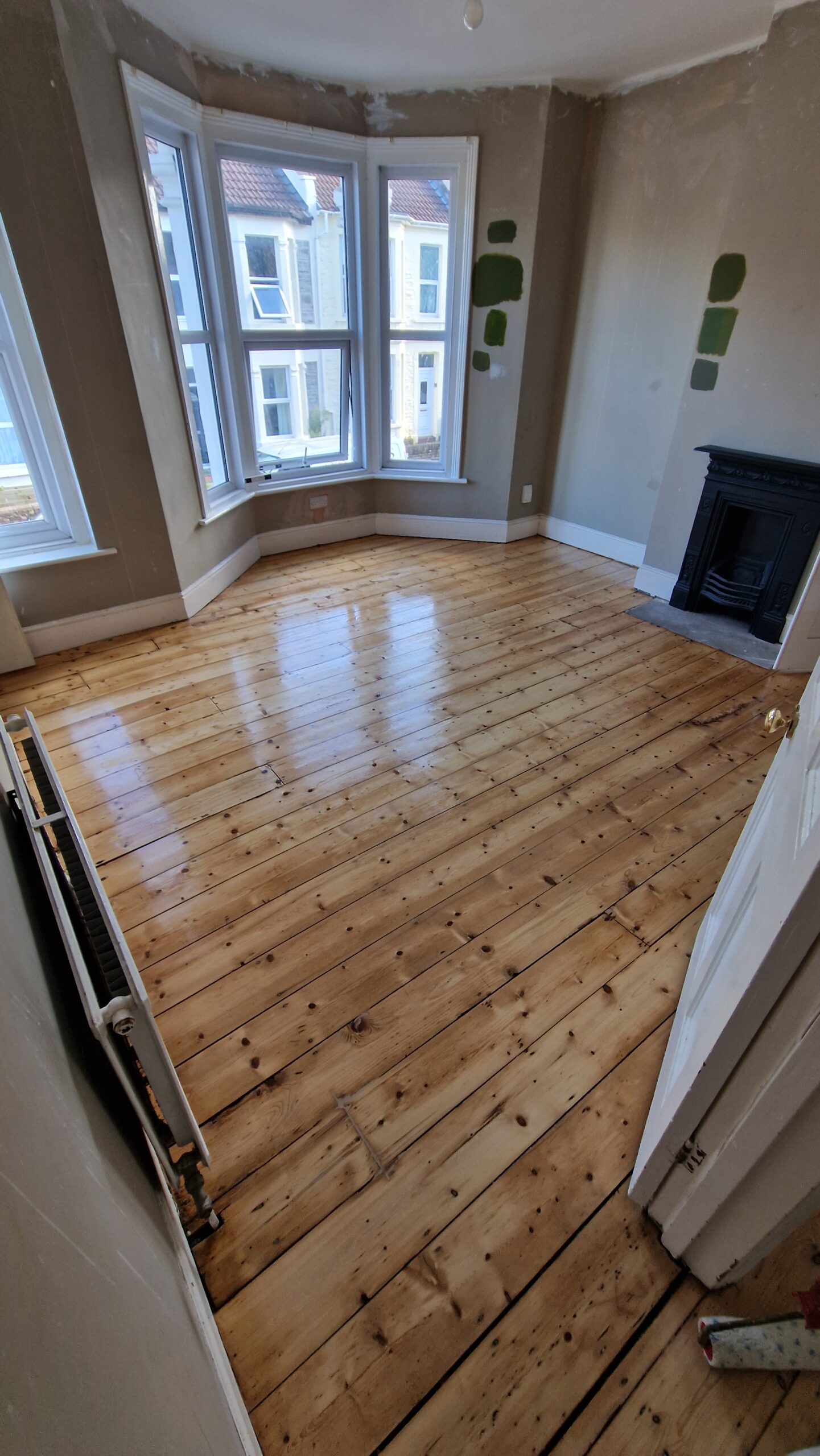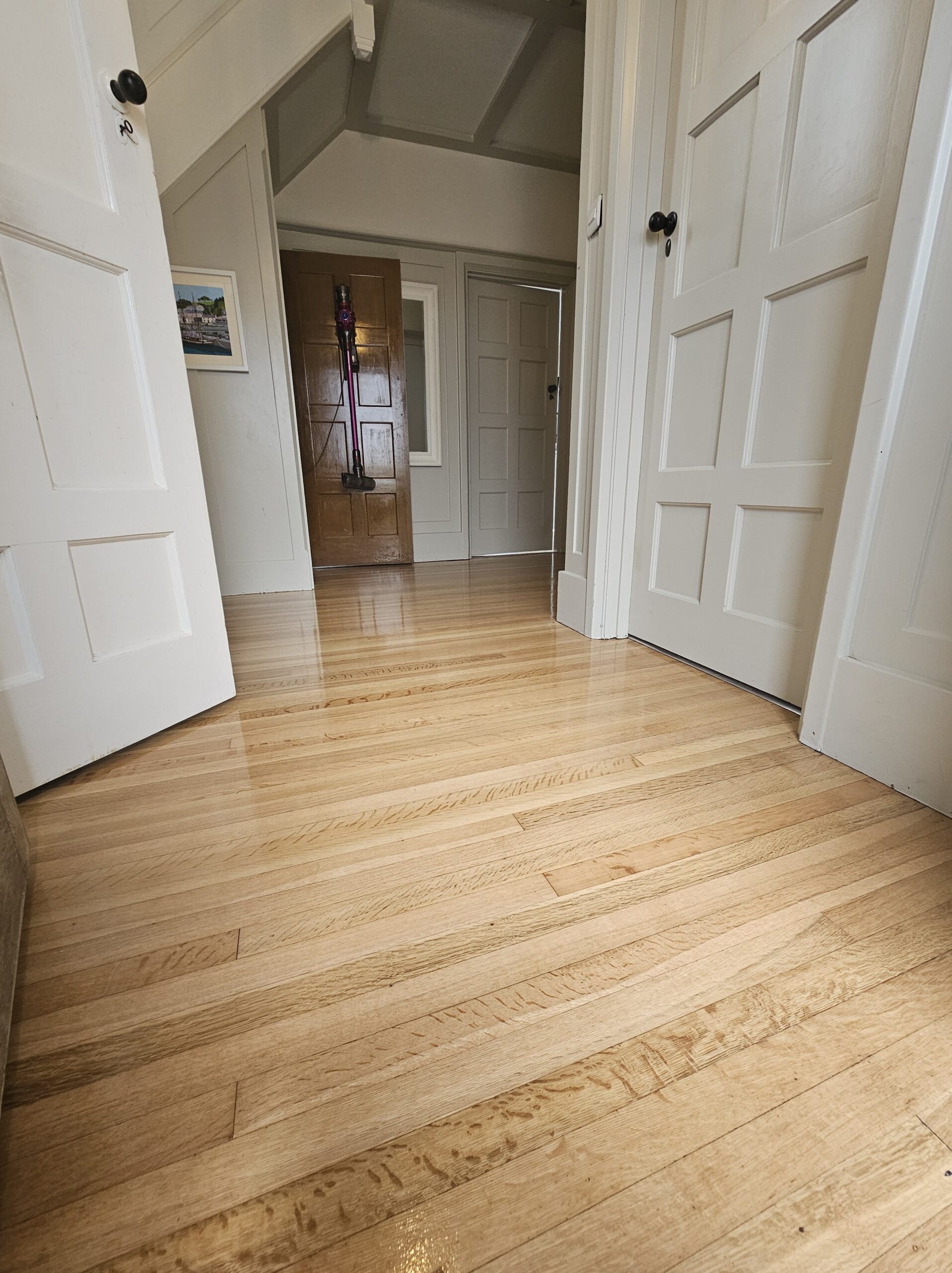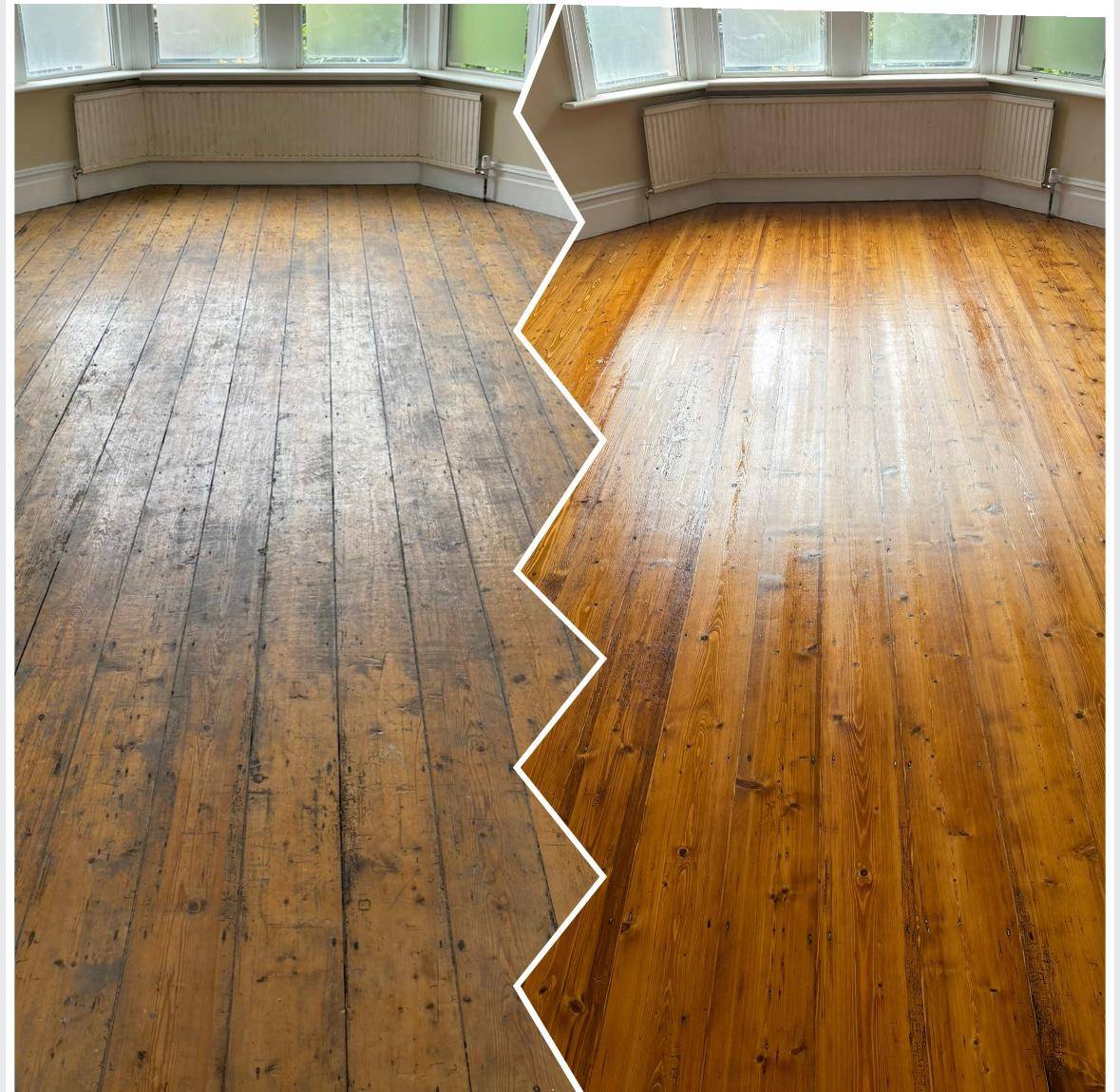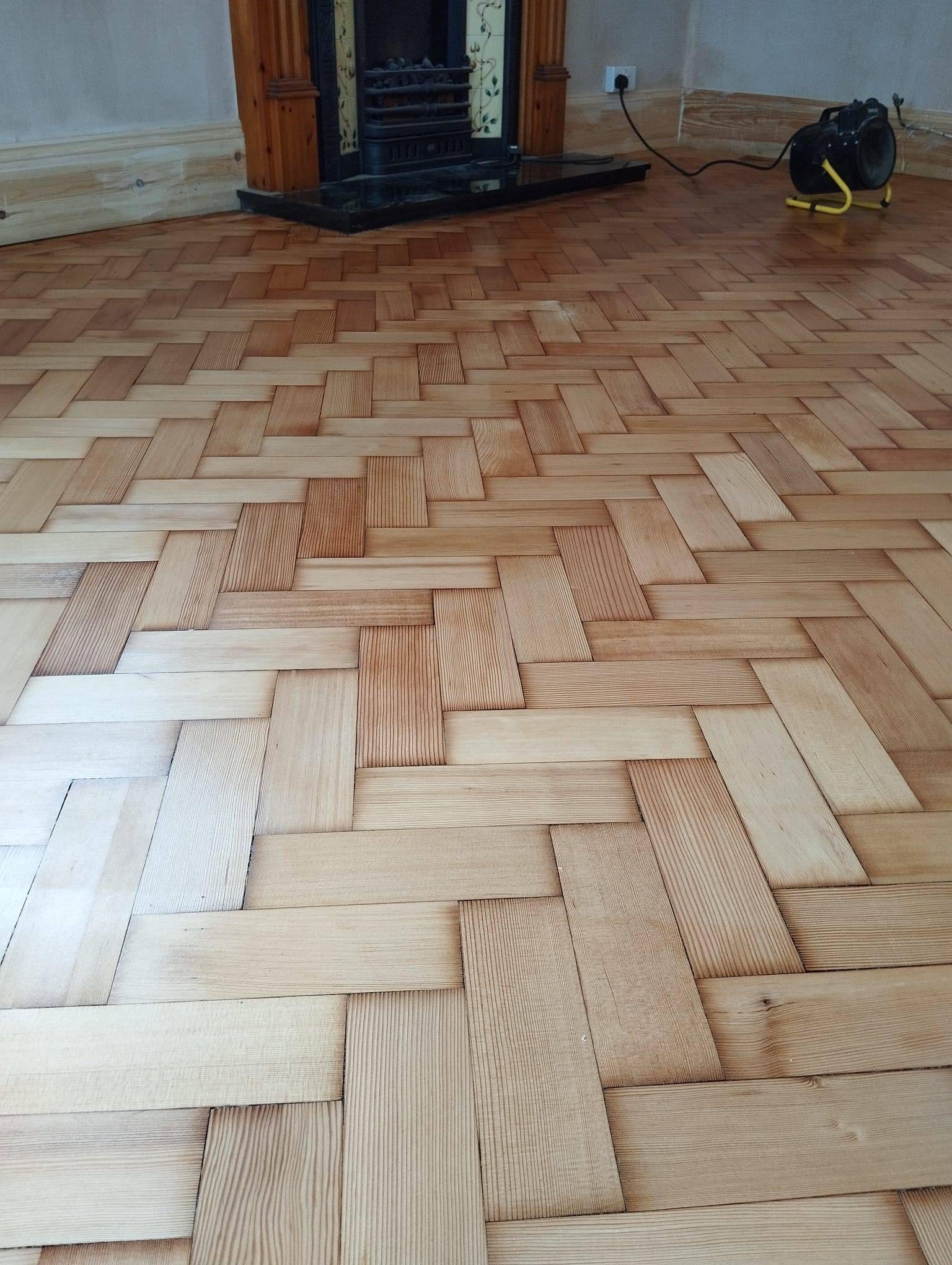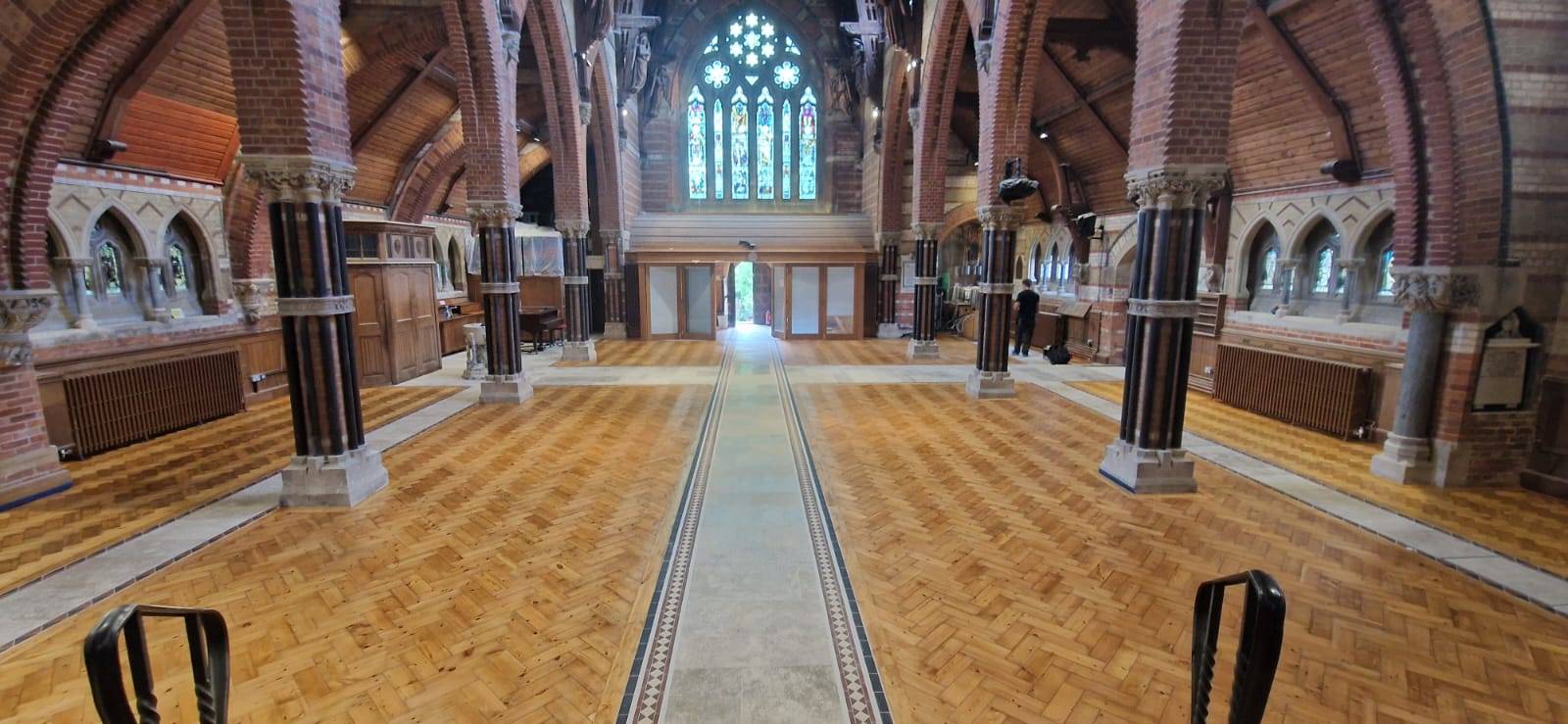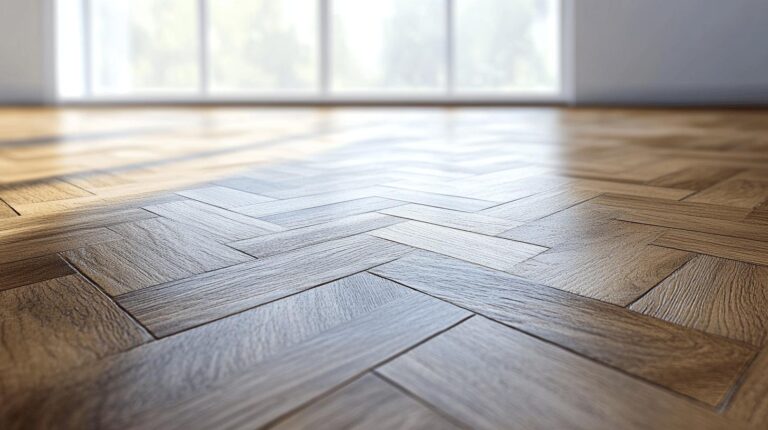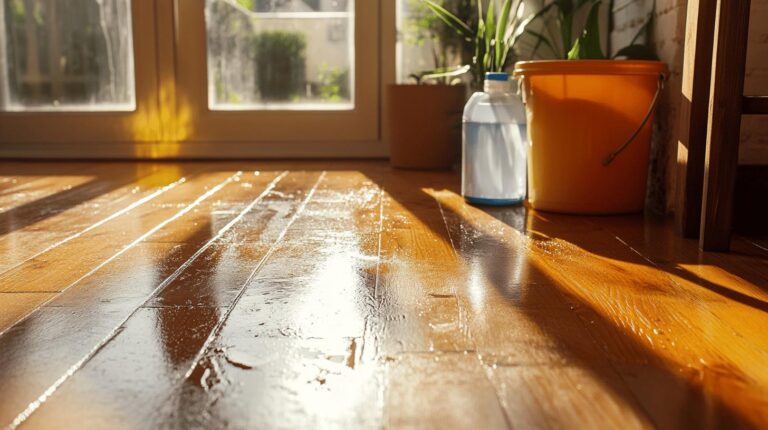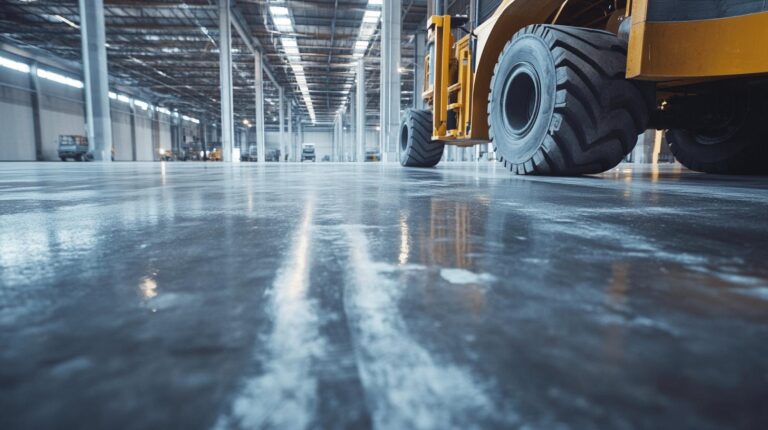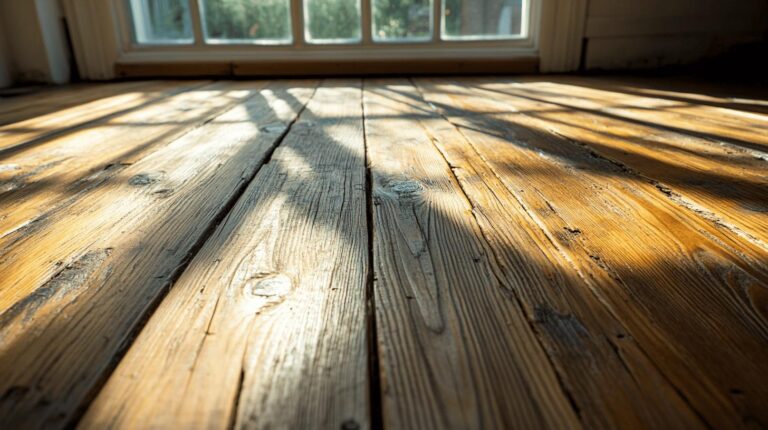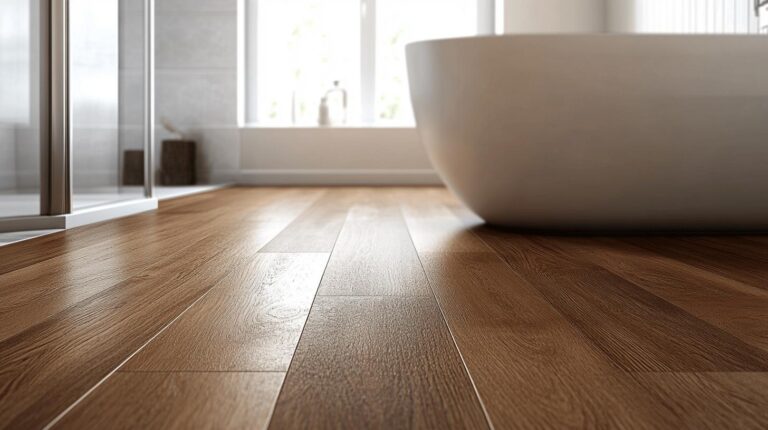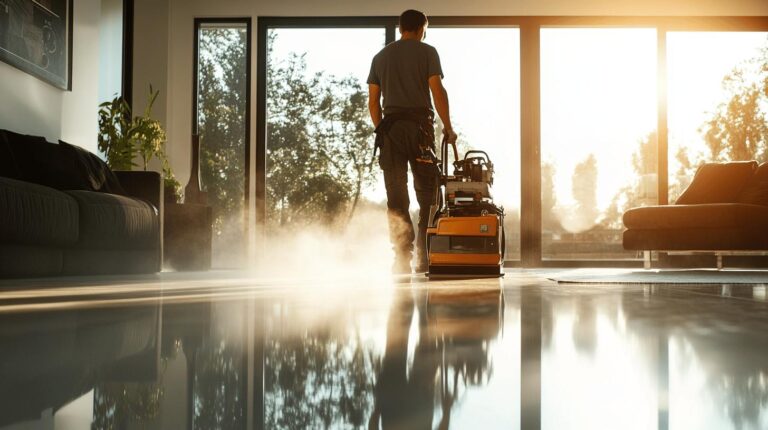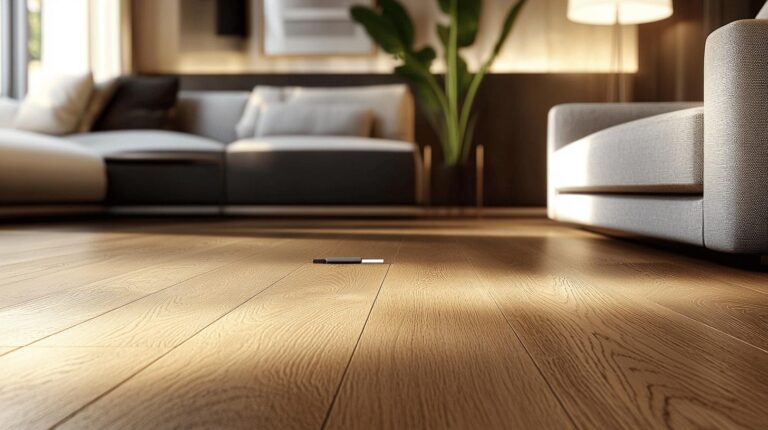Is floor sanding dust polluting your indoor air or purifying it? This question may seem surprising, but the reality of floor sanding and indoor air quality is complex. Traditional sanding methods, notorious for releasing clouds of fine dust, can significantly affect indoor air health. Fortunately, dust-free sanding has emerged as a solution to minimise these hazards. Utilising advanced techniques such as HEPA-filtered vacuums and sealed machines, this innovation captures up to 98% of dust particles. Let’s explore how embracing modern sanding technology doesn’t just safeguard our floors but also the air we breathe.
Understanding Floor Sanding Dust and Its Impact on Indoor Air Quality
Traditional floor sanding significantly affects indoor air quality by generating a large quantity of fine dust particles. As these tiny particles are released into the air, they can infiltrate various spaces, settling on surfaces and being inhaled by occupants. This dust not only creates a mess but also poses health risks, particularly to individuals with asthma or other respiratory issues. The lack of dust containment in traditional methods results in a prolonged cleaning process and may lead to the need for professional cleaning services to restore air quality.
Advancements in dust-free sanding technology have markedly improved the ability to maintain better indoor environments. Modern systems utilise HEPA-filtered vacuums and sealed sanding machines to capture up to 98% of dust particles during the sanding process. HEPA filters are particularly effective in trapping even the smallest particles, preventing them from becoming airborne. Sealed machines further minimise dust escape, ensuring that the surrounding area remains cleaner and safer. These technologies not only enhance air quality but also reduce the time and effort required for post-sanding cleanup.
Benefits of using dust-free systems:
- Significantly reduces airborne dust particles.
- Enhances indoor air quality and reduces health risks.
- Minimises cleanup time and effort.
- Improves safety for individuals with respiratory conditions.
- Provides a smoother and cleaner finish.
.
Despite the impressive capabilities of dust-free systems, they are not entirely foolproof in eliminating dust. While these systems can capture the vast majority of dust particles, some residual dust may still remain, particularly in difficult-to-reach areas like corners and edges. Therefore, even with dust-free technology, maintaining good ventilation and using protective gear remain essential to ensure the best possible air quality during and after sanding projects.
Debunking Myths About Floor Sanding and Air Quality
The prevalent myth that floor sanding can be completely dust-free is misleading. Despite advancements in technology, which allow for systems to capture up to 98% of dust, achieving a completely dust-free environment remains unattainable. Dust-free sanding systems, while highly efficient, cannot capture every particle, particularly in tight corners or along edges. This misconception can lead to unrealistic expectations and underestimation of the necessary precautions required for maintaining indoor air quality during sanding projects.
Understanding the Reality of Dust-Free Sanding
Complete elimination of dust during sanding is not possible due to the nature of wood and the sanding process itself. Even with high-efficiency particulate air (HEPA) filters and sealed sanding machines, some dust particles will inevitably escape. Therefore, maintaining proper ventilation and using protective gear are critical measures to manage residual dust effectively. These precautions ensure that both workers and inhabitants are safeguarded against potential respiratory issues.
Dispelling myths about floor sanding and air quality is crucial for improved health and safety management. By understanding the limitations of dust-free systems, individuals can take appropriate steps to enhance indoor air quality, such as investing in advanced equipment and incorporating safety measures. This awareness not only prevents health risks but also ensures a cleaner and more comfortable environment.
Health Implications of Floor Sanding Dust
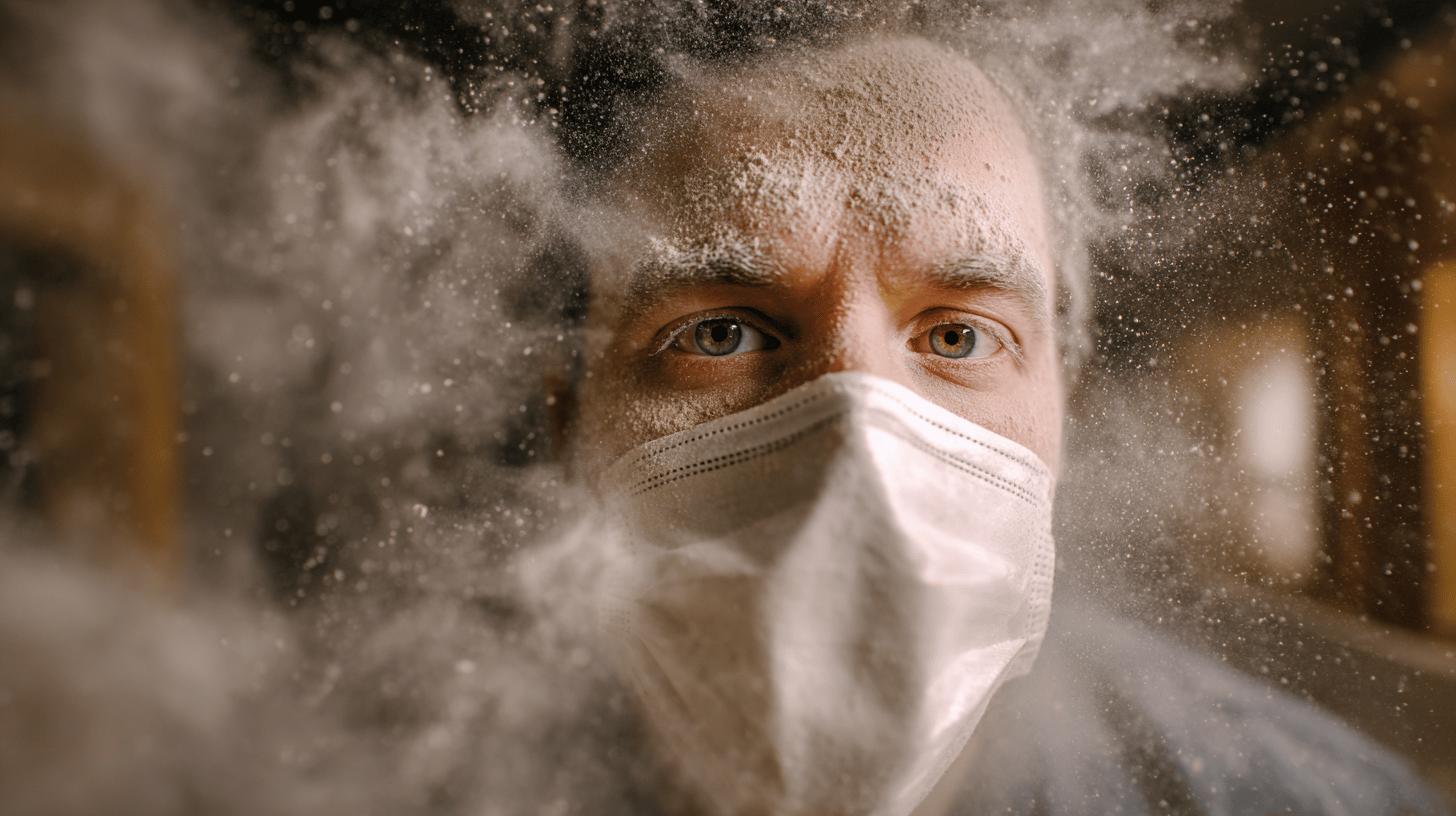
Exposure to floor sanding dust can lead to immediate health effects, particularly affecting the respiratory system. When individuals inhale the fine particles generated during the sanding process, they may experience irritation in their lungs, eyes, and skin. Such irritation can cause discomfort and exacerbate pre-existing conditions like asthma or allergies. Inhaling wood dust can lead to coughing, sneezing, and even shortness of breath in sensitive individuals, underscoring the need for effective dust management during floor sanding activities.
Long-term exposure to floor sanding dust can pose more serious health risks. Prolonged inhalation of wood dust is associated with chronic respiratory issues, including the potential development of asthma and other lung conditions. The fine particles can settle deep within the lungs, leading to persistent irritation and inflammation. This exposure may also increase the risk of developing allergic reactions or exacerbating existing respiratory conditions over time. Therefore, ensuring that dust is effectively captured and contained during sanding is crucial to prevent such health complications.
Choosing dust-free systems is essential for protecting health during floor sanding projects. These systems dramatically reduce airborne dust, thereby minimising the risk of health issues associated with dust inhalation. By investing in advanced technology that captures up to 99% of dust particles, individuals can ensure a safer environment for both workers and occupants. The reduced exposure not only enhances indoor air quality but also safeguards against long-term health implications, making dust-free sanding a critical consideration for any floor restoration project.
Techniques for Minimising Dust During Floor Sanding
Using advanced equipment is crucial in minimising dust during floor sanding, significantly enhancing indoor air quality. High-Efficiency Particulate Air (HEPA) filters and sealed sanding machines are essential components of modern dust-free sanding systems. These technologies, such as the Bona Dust Containment System, are designed to capture up to 99% of sanding dust, effectively reducing the amount of airborne particles. HEPA filters are highly efficient at trapping even the smallest dust particles, which prevents them from spreading throughout the space. Sealed machines further ensure that dust is contained within the sanding apparatus, preventing escape into the surrounding environment. This approach not only improves air quality but also reduces the need for extensive cleanup after the sanding process.
- Ensure proper ventilation by opening windows and using fans to circulate air and remove dust particles.
- Use dust masks to protect against any residual dust that may escape despite containment efforts.
- Employ dust barriers by sealing off areas not involved in sanding to prevent dust spread.
- Regularly clean and maintain equipment to ensure peak efficiency in dust capture.
.
Implementing these dust reduction techniques offers several benefits in maintaining air quality during floor sanding projects. Proper ventilation and the use of dust masks provide an additional layer of protection against residual dust, safeguarding the health of workers and occupants. Dust barriers help contain particles within the work area, preventing them from affecting other parts of the building. Regular maintenance of equipment ensures that it operates efficiently, maximising dust capture and minimising health risks. By employing these practices, individuals can significantly reduce dust exposure, leading to a cleaner, healthier environment during and after floor sanding activities.
Choosing the Right Equipment for Dust-Free Sanding
Selecting the correct sanding equipment is crucial for achieving dust-free sanding results. Key equipment, such as the Bona Dust Containment System and Lagler Trio, are leading choices in the industry. These specialised machines are designed to capture up to 99% of sanding dust, significantly enhancing indoor air quality. The Bona system utilises advanced vacuum technology to efficiently contain dust, while the Lagler Trio offers precision sanding with integrated dust extraction features. By using such high-performance machinery, not only is the work environment kept cleaner, but the final finish of the flooring is also improved, leading to a longer-lasting result.
Technician training plays a pivotal role in the effective use of dustless sanding technology. Why is trained operation important? Proper training ensures that operators can fully utilise the capabilities of the equipment, maximising dust capture and maintaining equipment performance. Technicians need to be familiar with the machinery’s settings, maintenance requirements, and best practices for different floor types. A well-trained technician can adapt the equipment’s use to suit specific project needs, ensuring optimal performance and safety. Investing in training not only enhances the quality of sanding but also extends the lifespan of the equipment.
Evaluating Equipment for Specific Needs
When choosing sanding equipment, several criteria should be considered:
- Project Scale: Larger projects may require more robust systems like the Bona Dust Containment System for efficient operation.
- Floor Type: Different floor materials may demand specific machines, such as those with variable speed control for delicate surfaces.
- Space Constraints: Compact areas may benefit from machines that offer manoeuvrability and precision.
- Dust Sensitivity: Projects in sensitive environments, like healthcare facilities, require equipment with superior dust extraction capabilities.
.
Investing in high-quality dust-free sanding equipment offers numerous benefits. Primarily, it ensures a cleaner and safer work environment by minimising dust exposure. This investment also translates into higher customer satisfaction due to the superior quality of the work and reduced post-sanding cleanup requirements. Additionally, quality equipment is more durable, offering long-term savings through reduced maintenance and replacement costs. By choosing the right tools and ensuring they are operated by trained professionals, the results of floor sanding projects can be dramatically improved.
Final Words
Understanding the impact of floor sanding dust on indoor air quality is essential for making informed decisions. Traditional methods leave a significant amount of dust, compromising air purity and health. Advancements in dust-free technology, combined with effective techniques and equipment, significantly reduce exposure, though some dust remains.
Debunking myths about dust elimination clarifies the need for ongoing precautions. By selecting the right dust-free sanding systems and techniques, improved air quality is achievable, reducing health risks and enhancing living spaces. The balance between floor sanding dust and indoor air quality—myth busting—is attainable with the right approach.
Breathe easy—book dust-free sanding → Wood Floor Sanding
FAQ
Does floor sanding create a lot of dust?
Floor sanding typically produces significant amounts of fine dust. Traditional methods can impair indoor air quality significantly without appropriate dust containment systems, leading to potential health risks and discomfort.
Is dustless hardwood floor refinishing really dustless?
Dustless hardwood floor refinishing is not entirely dust-free. Advanced systems with HEPA filters and sealed machines capture up to 98% of dust, significantly reducing, but not eliminating, all dust particles during the process.
Are dustless sanders really dustless?
Dustless sanders are designed to minimise dust significantly but cannot completely eliminate it. They capture the majority of dust particles, making them a better option for maintaining better indoor air quality compared to traditional methods.
Should you cover vents when sanding floors?
Covering vents during sanding is advisable to prevent dust from spreading through the HVAC system. This helps maintain air quality by containing dust within the immediate sanding area, reducing the risk of distribution throughout the building.
